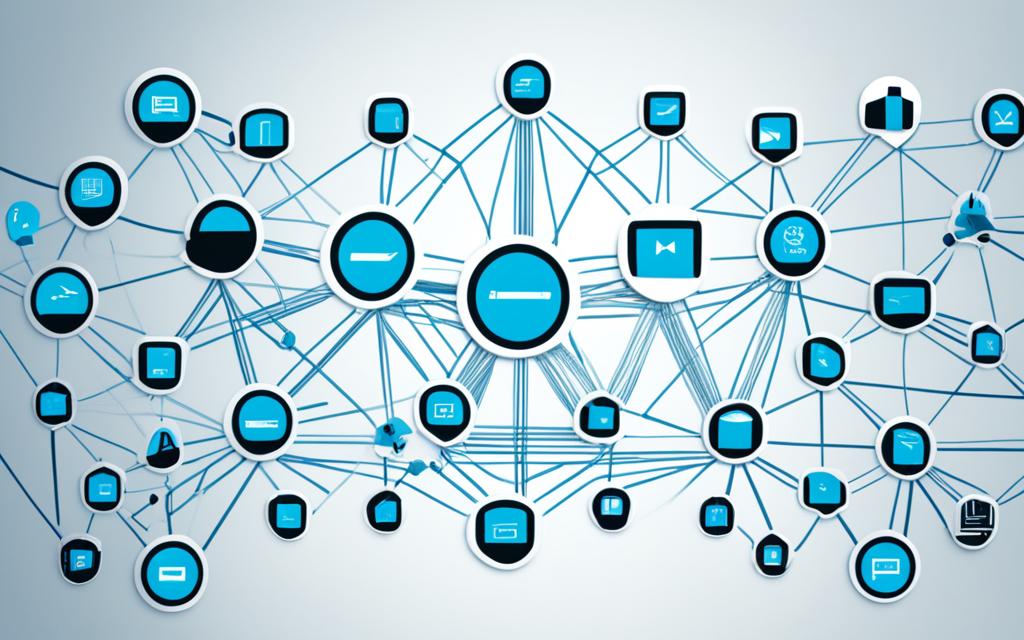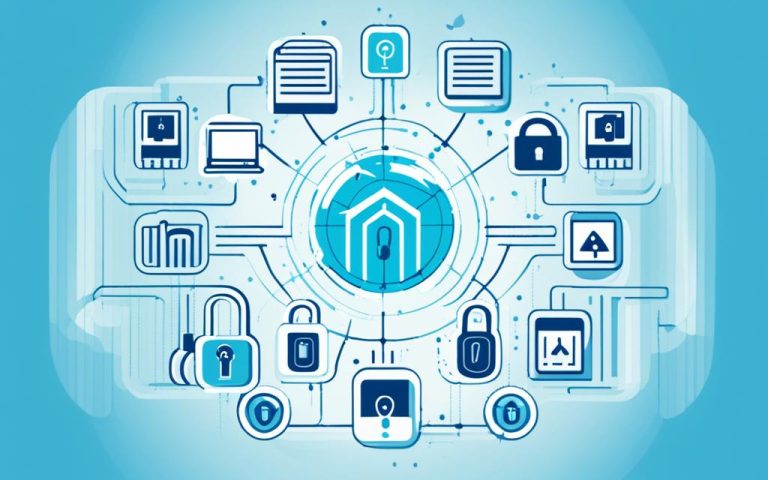The rapid development of IoT technologies has brought about various benefits and possibilities in different fields, such as sustainability, energy, environment, smart cities, e-health, and transportation. However, integrating IoT devices with local area wireless networks (WLAN) poses several challenges. These challenges include differences in operational methodologies between IoT and traditional operational technology (OT) devices, the absence of standardized protocols, proprietary systems, isolated networks, and disparate databases.
Despite these challenges, there are ample opportunities for organizations to optimize their connected device ecosystems within wireless networks and enhance their efficiency and performance. By successfully integrating IoT devices with WLAN, organizations can unlock new possibilities and reap the benefits of a connected and intelligent environment.
Operational Methodologies and Protocols in IoT and OT Integration
When integrating IoT devices with operational technology (OT) devices, one of the key challenges lies in the disparity of their operational methodologies. IoT devices are designed to enable remote access, data processing, and analytics, while OT devices are focused on real-time processing and control. This fundamental difference makes it difficult to seamlessly integrate and synchronize the two types of devices.
Moreover, IoT and OT devices utilize different communication protocols, further complicating the integration process. For IoT devices, protocols such as HTTP, MQTT, and ZigBee are commonly used, while OT devices rely on protocols like Modbus, TCP/IP, and LoRaWAN. The absence of a common protocol between IoT and OT systems poses a significant obstacle to successful integration.
To overcome these challenges, it is crucial to prioritize the standardization of protocols and ensure interoperability between devices and cloud platforms. By establishing a common protocol that both systems can effectively utilize, organizations can enable seamless integration and communication between IoT and OT devices. Standardization also facilitates the exchange of data, enabling a more streamlined and efficient operational workflow.
Standardized Protocols for IoT and OT Integration
Standardizing protocols offers numerous benefits, including:
- Enhanced compatibility between IoT and OT devices
- Improved interoperability and data exchange
- Simplified integration and synchronization
- Reduced complexity in system configuration and setup
By adopting widely accepted protocols, organizations can ensure that their IoT and OT devices can communicate seamlessly, facilitating the exchange of vital data and enabling real-time control and decision-making processes.
Standardization of protocols and interoperability between devices and cloud platforms are crucial for seamless integration and communication between IoT and OT devices.
In addition to standardized protocols, organizations should also consider utilizing protocol translators or gateways to bridge the gap between IoT and OT systems. These devices act as intermediaries, enabling communication between devices that use different protocols. By implementing protocol translators or gateways, organizations can simplify the integration process and ensure smooth data flow between the two types of devices.
The table below provides an overview of commonly used protocols in IoT and OT integration:
| IoT Protocols | OT Protocols |
|---|---|
| HTTP | Modbus |
| MQTT | TCP/IP |
| ZigBee | LoRaWAN |
Using standardized protocols and implementing protocol translators or gateways are essential steps in achieving successful integration between IoT and OT devices. These measures allow organizations to overcome the challenges posed by operational disparities and differing communication protocols, enabling them to leverage the full potential of their connected device ecosystems.
Overcoming Technical Challenges in IoT and WLAN Integration
Integrating IoT devices with local area wireless networks (WLAN) brings unprecedented opportunities for organizations to optimize their connected device ecosystems and enhance efficiency. However, this integration also presents several technical challenges that need to be addressed to ensure smooth operations and data security.
Scalability: Handling Massive Data Volumes
As the number of IoT devices rapidly increases, cloud platforms face the daunting task of processing and managing large amounts of data from various sources. Scalability becomes a critical challenge, as organizations need to ensure that their infrastructure can handle the growing influx of data while maintaining performance and reliability.
Simplified IoT Device Compatibility
IoT devices come in a range of models and types, leading to compatibility issues when integrating them with WLAN. Simplifying device compatibility and ensuring seamless interoperability between different IoT devices is essential for successful integration.
Network Connectivity Issues
IoT devices heavily rely on wireless networks to connect to the cloud and transmit data. However, poor signal strength or network congestion can hinder device performance. Resolving network connectivity issues and optimizing wireless network infrastructure are crucial to ensure uninterrupted data transmission and smooth IoT operations.
Data Security and Privacy Concerns
One of the primary concerns in IoT and WLAN integration is data security. Organizations must protect the transmission of sensitive data between IoT devices and the cloud from potential cyber-attacks. Encryption and private connectivity solutions play a vital role in mitigating security risks. However, ensuring robust data security while maintaining device battery life requires careful consideration and a well-balanced approach.

Overall, integrating IoT devices with WLAN opens up vast possibilities, but it also presents technical challenges. By addressing scalability, simplifying device compatibility, resolving network connectivity issues, and implementing robust data security measures, organizations can overcome these challenges and unlock the full potential of their connected device ecosystems.
Administrative Considerations for IoT and WLAN Integration
Integrating IoT devices with local area wireless networks involves not only technical aspects but also crucial administrative considerations. Organizations must take into account various factors to ensure a secure and scalable integration of IoT and WLAN.
Security:
In order to protect IoT devices and the infrastructure from potential vulnerabilities and attacks, it is essential to implement robust security measures and follow best practices. This includes secure authentication and encryption protocols, regular security audits, and continuous monitoring of the network.
Scalability:
A key consideration in the integration of IoT devices with WLAN is the ability to handle the large volumes of data generated by these devices. Scalability is crucial to ensure that the network infrastructure can accommodate the increasing number of devices and data traffic without compromising performance and reliability.
Gateways, Protocol Translators, and Centralized Management:
Gateways and protocol translators play a significant role in facilitating the integration and management of IoT and operational technology (OT) systems. They act as intermediaries, enabling seamless communication between different devices and protocols. Additionally, a centralized management platform provides comprehensive visibility and control over the connected devices, allowing organizations to effectively monitor and manage the IoT ecosystem.
Benefits of Administrative Considerations
By prioritizing security, scalability, and the implementation of gateways and a centralized management platform, organizations can achieve the following advantages:
- Enhanced data security and protection against potential cyber threats
- Improved network scalability, ensuring seamless handling of increasing IoT device volumes
- Efficient management of IoT and OT systems, increasing operational efficiency
| Benefits | Description |
|---|---|
| Data Security | Implementing robust security measures protects IoT devices and infrastructure from potential vulnerabilities and attacks. |
| Scalability | Ensuring the network infrastructure can handle the growing number of IoT devices and data traffic without compromising performance. |
| Efficient Management | Centralized management platforms enable effective monitoring and control of the IoT ecosystem, enhancing operational efficiency. |
Implementing these administrative considerations allows organizations to create a secure and scalable IoT and WLAN integration, maximizing the benefits of connected devices within their wireless networks.
Conclusion
Integrating IoT devices with local area wireless networks (WLAN) is a challenging yet rewarding endeavor for organizations. Despite the complexities and technical hurdles, there are ample opportunities to optimize connected device ecosystems, enhance efficiency, and improve overall performance.
One of the main challenges is the operational disparity between IoT and traditional operational technology (OT) devices. However, by addressing this disparity and finding common ground, organizations can integrate and synchronize these devices effectively.
Additionally, overcoming challenges related to differences in protocols, scalability, network connectivity, and data security is crucial. Embracing administrative considerations, such as implementing robust security measures and scalable solutions, will enable organizations to navigate these challenges successfully.
In conclusion, IoT and WLAN integration presents a wealth of opportunities for organizations to enhance their operations and leverage the power of connected devices. By overcoming the challenges and considering the administrative considerations, organizations can create secure and efficient connected device ecosystems within their wireless networks, propelling them towards a brighter technological future.
FAQ
What are the challenges in integrating IoT devices with local area wireless networks?
The challenges include operational disparities between IoT and traditional operational technology (OT) devices, differences in communication protocols, scalability issues, network connectivity concerns, and data security risks.
Why is finding a common protocol important for IoT and OT integration?
Finding a common protocol is crucial for successful integration as IoT and OT devices use different communication protocols. Standardization of protocols and interoperability between devices and cloud platforms are essential for seamless integration and communication between IoT and OT devices.
What are the technical challenges in IoT and WLAN integration?
Technical challenges include scalability issues as the rapid growth of IoT devices requires cloud platforms to handle large amounts of data. Other challenges involve simplifying IoT device compatibility, resolving network connectivity issues, and ensuring data security against cyber-attacks.
What administrative considerations are important for IoT and WLAN integration?
Important administrative considerations include implementing security measures and best practices to protect IoT devices and infrastructure, ensuring scalability to handle large volumes of data, and utilizing gateways, protocol translators, and a centralized management platform for integration and management of IoT and OT systems.



















